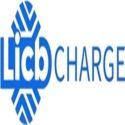Notifications

8 minutes, 17 seconds
-2 Views 0 Comments 0 Likes 0 Reviews

As a leading EV charger manufacturer in China, LiCB Charge delivers reliable AC and DC electric vehicle charging stations along with comprehensive charging solutions.
At first glance, charging an electric vehicle (EV) seems simple—plug it in and wait. But behind this straightforward process are several practical factors that can impact your charging experience. From finding an available charging spot to understanding connector types, charging speeds, and payment methods, public EV charging can be more complex than it appears.
While charging at home is often the most convenient option, not every EV owner has access to a private garage or dedicated parking—especially in urban areas or apartment complexes. That’s where public charging stations come in, offering essential support for daily use, long commutes, and road trips.
In this guide, we’ll break down how public charging works, what to expect at a charging station, and how to make the most of every stop.
As electric vehicles become more popular worldwide, public charging infrastructure is rapidly expanding. Governments, automakers, and energy companies are investing heavily to meet growing demand.
Today, you’ll find EV chargers in city centers, shopping malls, office complexes, parking garages, and along highways. This widespread availability is essential to overcoming “range anxiety”—the fear of running out of battery before reaching your destination—and enables EV ownership even for those without access to home charging.
When you arrive at a station, your first task is to find the charging cable. Most DC fast chargers and Level 2 stations have cables built-in. However, in some regions (especially in Europe), you may need to use your own cable, usually stored in your trunk.
Know which connector your vehicle uses:
Type 1 (SAE J1772) – Common in North America
Type 2 (Mennekes) – Standard in Europe
CCS or CHAdeMO – For fast charging
Next, connect the cable to your EV’s charging port. This is usually located where a traditional fuel cap would be, but designs vary—some ports are positioned at the front or rear of the vehicle.
Make sure the connection is secure. Most EVs will signal a successful connection with a light or sound.
To begin charging, most public stations require you to authenticate your session. This is typically done through:
RFID cards or key fobs
Mobile apps (ChargePoint, Electrify America, EVgo, etc.)
QR code scanning
Contactless credit/debit cards or mobile wallets
Once authenticated, charging usually starts automatically. Most stations display real-time data—such as charge status, speed, time remaining, and cost—on a screen or app.
Charging speed depends on the station’s power output and your EV’s charging capacity. Here are the three main types:
Source: Standard wall outlet
Speed: 3–5 miles of range per hour
Use Case: Emergency or overnight home charging
Note: Extremely slow; not ideal for daily use
Source: Home chargers or public stations
Speed: 20–25 miles of range per hour (vehicle-dependent)
Use Case: Daily home charging or workplace/public parking
Benefit: Great balance of speed and accessibility
Source: High-powered public stations
Speed: 100–250+ miles of range in ~30 minutes
Use Case: Road trips, long commutes, fast top-ups
Limitations: Not all EVs support DC fast charging; older models may charge at slower rates
DC fast chargers use direct current to charge your battery quickly, bypassing the onboard charger. You'll need a compatible port like CCS or CHAdeMO.
Use apps like PlugShare, ChargeHub, or A Better Routeplanner to:
Locate chargers in real time
Check availability and speeds
Read user reviews
View pricing and connector types
Not all EVs can take full advantage of fast chargers. For example, if your car maxes out at 50 kW, it won’t benefit from a 150 kW station. Knowing your vehicle’s limits helps you plan more efficiently.
Public chargers are a shared resource. To be considerate:
Move your car when charging is complete
Don’t unplug others’ vehicles
Avoid occupying fast chargers longer than needed
Fees vary by provider and location:
Per kWh: Pay for the energy used
Per minute: Common at fast chargers
Flat session fee: One price per session
Some providers also charge idle fees if you leave your EV plugged in after it’s fully charged.
Convenient for drivers without home chargers
Supports long-distance travel
Available in urban centers, malls, and along highways
Promotes clean energy and reduces emissions
Availability may be limited in rural areas
Inconsistent payment methods
Varying pricing and speeds
Occasional wait times or out-of-service units
The public charging landscape is evolving rapidly, with exciting developments ahead:
Ultra-fast chargers delivering over 300 kW
Wireless charging embedded in parking lots
Battery swap stations for near-instant refueling
Solar-powered chargers for clean, off-grid energy
As technology improves and infrastructure expands, charging will become even faster, easier, and more accessible.
Public charging stations are a key part of the EV ecosystem, offering flexibility and peace of mind for drivers on the go. By understanding how these stations work and knowing what to expect, you can make every charging session efficient and hassle-free.
Whether you’re commuting across town or heading out on a road trip, a smart charging plan keeps your journey smooth, sustainable, and stress-free. As public chargers become more common and powerful, keeping your EV energized is easier than ever.Know more about Google SEO Directory
China EV Chargers EV Charger Manufacturer Smart EV Chargers Electric Car Chargers Electric Vehicle Chargers Electric Car Charging Stations

